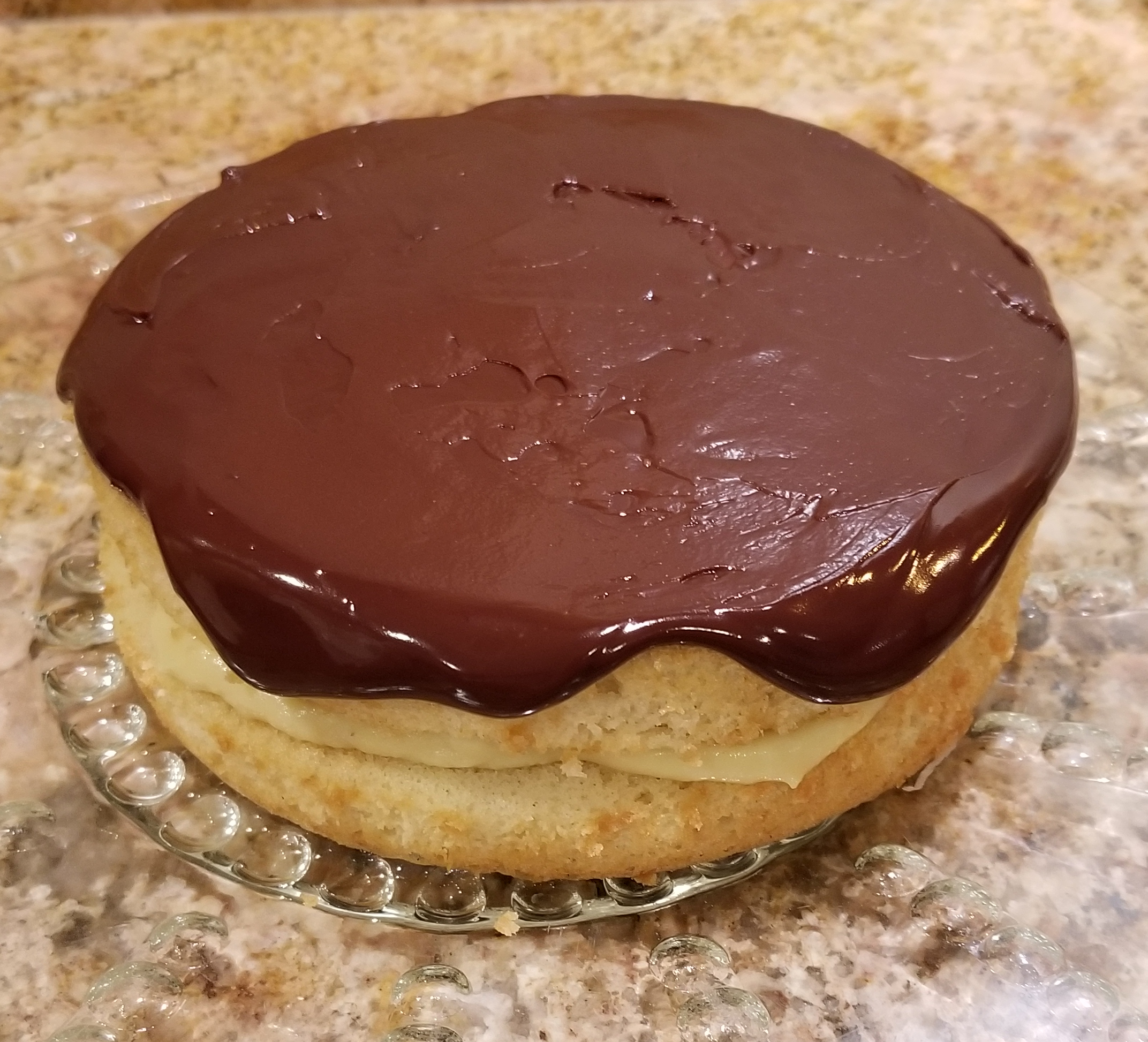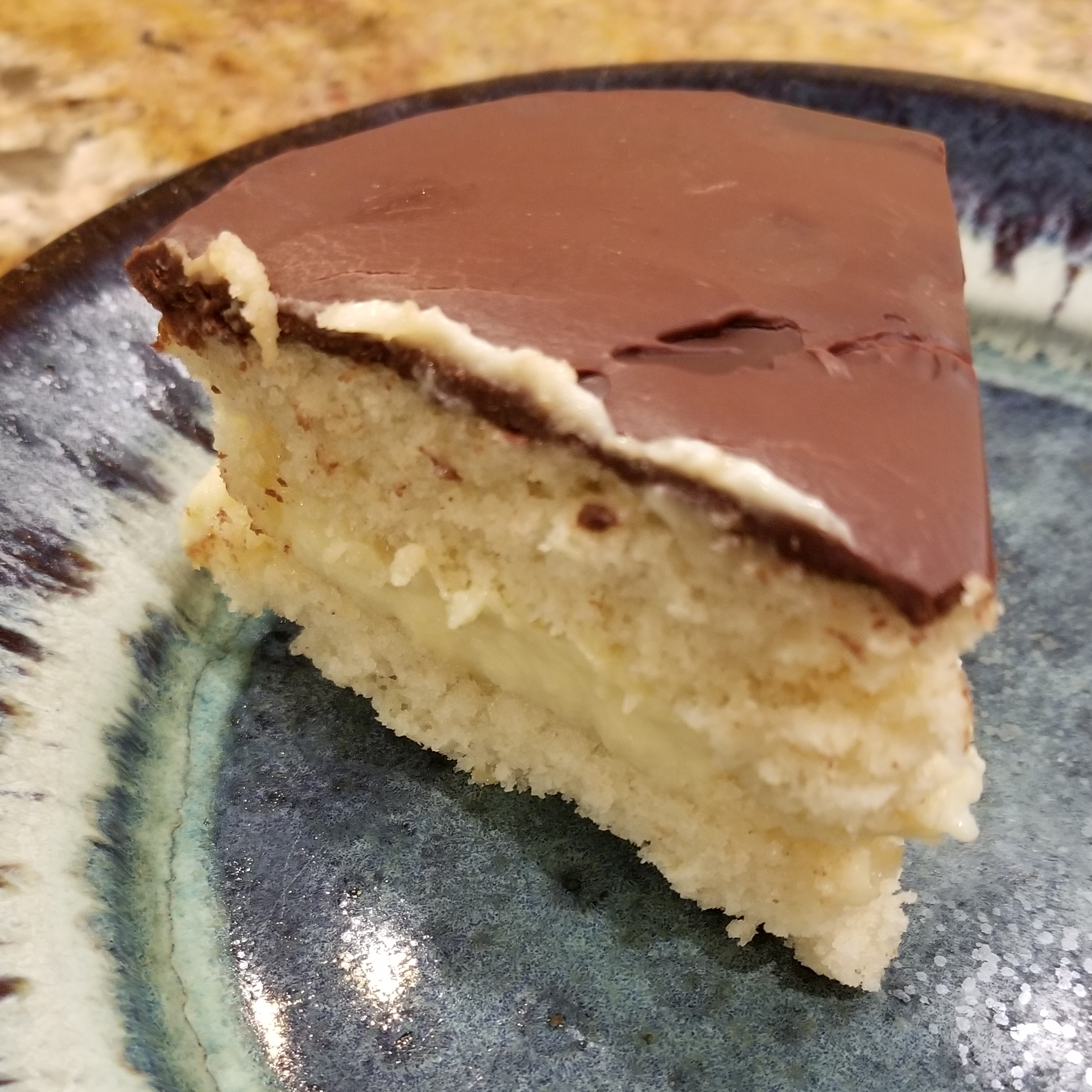I don't know what it is about Boston. They seem to have an aversion there to calling things by their right names. I remember my disappointment as a child, when I found out what the "Boston Tea Party" really was. I mean, what kind of a party is that? Imagine: your friends invite you to a "Party". You show up, with a bottle of something nice for your host. You are handed a hatchet and urged to dress yourself in what can only be described as a racially-insensitive cultural appropriation. You then assist your host to commit violent and destructive acts, in the hopes of starting a war. And you don't even get any tea. This is the sort of behavior that gives political insurrection such a bad name.
The Resident Food Critic had a similar reaction when she found out that Boston Cream Pie isn't actually a pie. And it doesn't have any cream in it either. But when she calmed down and agreed it give it a try, she admitted it was pretty tasty. (For anyone who is wondering, I am sad to report that Boston Baked Beans are exactly what they sound like. Beans. Baked. That's it. It seems to me that if there were ever a time to stray from the literal truth, this would be it, but no. No such luck.)

Boston cream pie, in case you don't know, is a cake. It is two thin layers (or one thicker layer, split in half), of sponge cake, with a cream filling between the layers. So far, I admit, it sounds plain enough for the Pilgrim Fathers to approve. And apparently that's exactly what it was, for the longest time. In Baking in America, Greg Patent credits Betty Crocker's Picture Cook Book (1950) for having the bright idea to add a chocolate frosting (basically, a ganache) and turn it into something worth eating.
Why is it called a pie? This is not completely clear. One story is that, back in the Olden Days, the distinction between pie and cake was not so clear-cut, and the terms were thrown around fairly loosely. For example, there is a related phenomenon called "Washington Pie", which is two thin layers of sponge cake with a layer of jam in between. Another story is that "Washington Pies" were a invented as a pie-substitute during the Civil War, when local conditions made in impossible to get lard for pie crust. This story doesn't sound likely to me, but I also have a hard time believing that our great-grandmothers didn't know the difference between pie and cake. No, I think in the end it has to be blamed on Boston. That whole Tea Party thing clearly left a scar.
In any case, Boston Creme Pie is quite a rich dessert. It's best served after a light meal (or at some non-meal time), and in smallish wedges. And it goes great with Our Favorite Beverage. Or even a cup of strong coffee.
Notes
This is a gluten-free dessert. If you do not want a gluten-free dessert, you can substitute cake flour for the gluten-free flour, and omit the xanthan gum.
The chocolate icing will only be as good as the chocolate you start with. You don't need a lot, but spring for the best quality you can find. I find Ghirardelli 60% Cacao to be good, and readily available.
Inspiration
Recipes for Boston Cream Pie abound. And yet, I had a hard time finding one that fit my criteria, so the end result has been cobbled together from many sources. The cake is a half-size and gluten-free version of "Hot-Milk Sponge Cake" from The Fannie Farmer Baking Book. I needed a cream filling that used corn starch, rather than flour, to thicken it. I found what I was looking for in Betty Crocker's Picture Cook Book (1950).

In true New England fashion, Fannie Farmer doesn't include a chocolate icing at all, instead suggesting you dust the top with confectioners' sugar. And Betty Crocker was written at a time when really good chocolate bars were unobtainable, so it suggests a sort of fake ganache, made from things like unsweetened chocolate and Crisco. It sounded like a lot more work than real ganache, and not nearly as good. Fortunately, real ganache recipes are not hard to find. This is a half-size version of one in Baking in America, but you can find basically the same idea in almost any modern cookbook or website.

Comments powered by Talkyard.